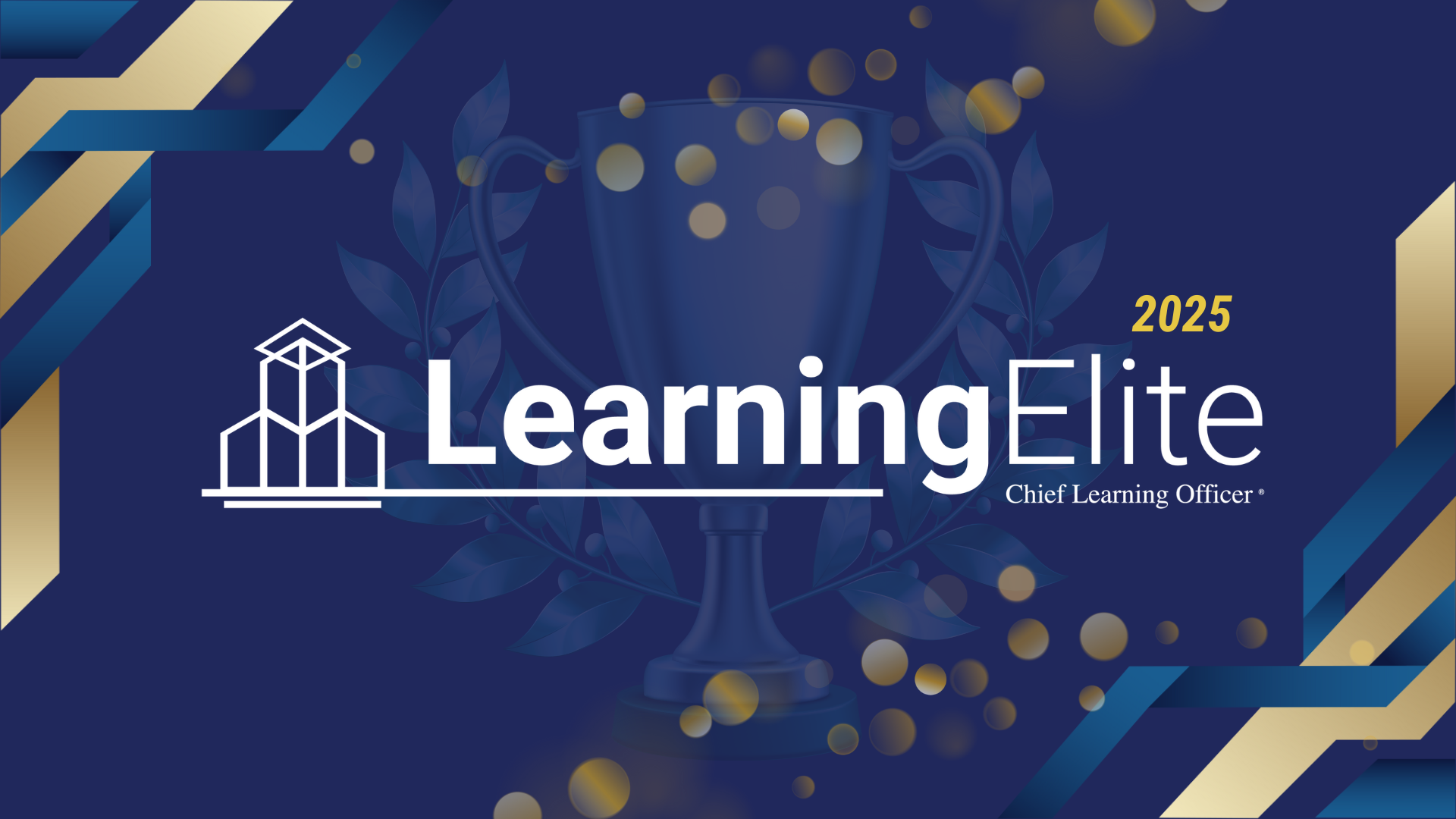James Mitnick, senior vice president of Turner Construction Company, knows the ins and outs of his organization. He should. He’s spent the past 35 years acquiring and sharing knowledge, and helping to secure Turner’s place as one of the top companies in every major market segment of the construction industry. Currently responsible for educating about 6,000 internal employees, Mitnick also extends learning and development opportunities to some 25,000 subcontractors.
Mitnick began his career in operations and gradually moved through engineering, sales, project management and purchasing. Once he broke into the management ranks, Mitnick ran entire offices in Pittsburgh, Detroit and New Jersey. He even built one from scratch in Buffalo, N.Y. In fact, he performed so well, the CEO asked him personally to take on his next big project: Develop and grow Turner through learning.
“(Thomas Leppert, Turner chairman and CEO,) came to me one day and said, ‘If we’re really going to develop and grow our company, we have to do a better job of developing and training our staff. I want you to come out of operations because you have a strong operations background, but you also have a passion for thinking out of the box, and know how to use technology, etc. Try to find a way that we can develop and train 1,000 new engineers a year,’” Mitnick said.
Mitnick’s first thought was to align Turner’s business strategy with a learning strategy, and he proceeded to do just that. “If we really want to grow the company by 10 or 15 percent a year, that means we’re going to increase $1 billion in volume. $1 billion in volume means you’ve got to hire 600 people. You have people that leave or retire. All of a sudden, you’ve got 1,000 new people a year you’ve got to develop and train. We’ve got 45 business units, and we do work in 20 different countries. How do you get the knowledge and share the information across that wide a variety of individuals working on 1,500 projects in 30-some states and multiple foreign countries? I went away on a sabbatical, came back and made a presentation to our CFO, president and chairman. I came up with the concept of building a knowledge network, a solution that would integrate learning with knowledge and the ability to share it across various mediums.”
A successful pilot program revealed that Turner did not have the infrastructure to support the Turner Knowledge Network (TKN). So Mitnick and his team changed every computer, router and switch in the company to enable global communication and information sharing. Next, he tackled content development needs such as technical training, which brought its own challenges. “We want to make sure people are the best builders,” Mitnick said. “There are certain things that historically we make the same mistakes on all the time. We need to learn from those mistakes and make sure that we connect people between L.A., Boston, Miami and Houston to learn from those mistakes so they don’t make the same mistake twice. A lot of the content we build deals with technical training, how to do stuff and be a good builder. Other training deals with areas of risk management such as safety, because we’re in a risky business—people get hurt. We constantly want to transfer knowledge and skills about how you set up jobs properly, how you run jobs, how you want to be familiar with safety and OSHA standards and requirements so people don’t get hurt. We’ve also developed courses that deal with behavior, how people act and the laws you have to deal with for diversity and harassment training that we can distribute very consistently across the enterprise.”
Turner’s earnings have increased every year since TKN rolled out its first program in 2002, though Mitnick is careful not to attribute all of that growth specifically to learning. The market has changed, as have the type of jobs Turner works on. But Mitnick admits that the company has done a better job of selling work and managing jobs over time. TKN also has proved useful as a recruiting tool.
Company growth has made the need to shorten the time-to-competency rate urgent, and the need for experienced workers has grown. Unfortunately, experience generally can be gained only through trial and error, failure and success. TKN was created to promote a different type of learning dynamic. Its 150 or so courses, 100 of which are Web-based, with a great deal of construction-industry-specific customization, are the foundation of an elaborate competency model that deals with nine job families, such as construction, safety and community affairs. Each job family has eight levels and contains detailed descriptions of various job roles at all levels of the organization.
Mitnick currently is working with subject-matter experts and instructional designers to build a curriculum that will address needs named in reports and evaluations from the past year or two. Content-creation efforts center on knowledge sharing, collaboration, ease of use, access to courses, documents, manuals and checklists—all of which are continually revised to meet the needs of a rapidly changing workforce and industry. If something does not meet a specific need, any one of these tools might be eliminated.
“The number-one way we learn is on-the-job training,” Mitnick said. “That’s the way it has been for 100 years. If you think about it, we build buildings. You don’t learn how to build buildings in books or in a classroom. You do it by doing it. If you take the on-the-job training, the instructor-led courses we’re doing with soft skills, the technical training that we can now distribute consistently across the enterprise to deal with quality control issues and how to do things right online, you’re able to connect people, whether it’s through communities of interest, communities of practice, using collaboration tools, etc. You start to embed learning into the work instead of throwing courses at people. The reality is, people gravitate to learning. They will take it if it’s good, relevant and timely. We make learning part of their work and how they find information, whether it’s through our portal or through our one-dimensional communities, which bubble up and elevate information that’s kind of buried in the document management system of our company into a level that’s useful and relevant, so they can get to a document in two clicks instead of 10. That’s where we are today. Our goal is to put into place, from now until the end of the year, the balance of our collaboration components with both communities and be able to do virtual meetings and instant messaging that’s secure within our organization.”
Many virtual elements of TKN already are in place, as Duran Johnson can attest. Johnson, technology services manager at The Turner Corp., has worked closely with Mitnick for four years, offering advice about tools and applications and how they might or might not be suitable for integration. He is working with Mitnick to further develop the one-, two- or multi-dimensional communities that will act as forums for people with like interests to share thoughts and collaborate. Johnson describes working with Mitnick as fast-paced and contagiously exciting. “The schedule that we follow is very, very aggressive, but no one really has a problem with it, because we’re all as eager and excited about getting those projects accomplished as he is,” he said. “One thing that I think is very admirable is he does (most of his work) virtually. I’m in Dallas. He’s in Pittsburgh. Other teams are in New Jersey and Seattle. We’re spread all across the country, and he is very adept at making this geographically dispersed team effective. We get together on a quarterly basis, but the majority of the time is spent in virtual mode. It’s hard enough gaining someone’s trust when you sit with them every day, let alone unable to be face-to-face with them on a regular basis, but he does.”
That ability to connect across regions, to transfer knowledge and to quickly and efficiently conduct work is one of the pillars behind TKN’s success. Mitnick continues to explore innovations such as Web forms, technology that will automate workflow and enable workers to fill out forms by calling a number on a cell phone, thereby reducing repetitive behavior and boosting productivity. “Turner is a brand,” Mitnick said. “Our products are buildings, and every one is custom. How you develop staff is what’s key, and we really focus in terms of development of our folks on giving them the right information at the right time. We’re trying to give our folks the tools that allow them to understand the industry, be good builders, but also have the soft skills to effectively listen and communicate with owners and architects who are very professional that we work with every day. At the same time, we have to be able to communicate, have the respect and understand how to do stuff with the mechanics in the field. We can schedule our jobs efficiently. We can have good quality control on jobs, and at the end of the day, we have an owner who walks away and says, ‘I got good value for hiring Turner. I got a good product and I paid good value for it.’”
“Jim has done a terrific job,” said Thomas Leppert, chairman and CEO, The Turner Corp. “Several years ago he took it on himself to really lead what at that time we talked about as Turner University. It has expanded into the Turner Knowledge Network and has many more components than just the learning side, but learning still remains the core to it. Jim not only put his arms around the needs of Turner, he has grown to be an expert in the field. Jim immersed himself in the issues and understood that distance learning and our TKN wasn’t simply putting some things on a computer screen and sending them out. He really engaged himself, got the best resources and has become an expert—not only from a Turner standpoint, but in the construction industry. He’s become someone who contributes in this area among all industries, and I think his recognition and the awards he’s received recently are indicative of that. Everyone at Turner is just ecstatic about the results that we’ve had and the potential that TKN gives us as both a strategic and a tactical tool.”
—Kellye Whitney, kellyew@clomedia.com
Name: James Mitnick
Title: Senior Vice President
COMPANY: Turner Construction Company
Successes:
- Developed competency model to map skills for nine job families and existing Web-based and instructor-led courses.
- Developed full skills gap analysis to transfer learning accountability to each employee.
- Working to fully embed learning into individuals’ work.
- Created one-dimensional communities of practice, each of which bubble up information to the end user that is useful and relevant within two clicks; and two-dimensional communities of practice for all instructor-led and Web-based training to connect the learner with subject-matter experts.
- Converted two-thirds of all training to Web-based for easy access and consistency for all staff worldwide.
- Earned Bronze Award for Creative Alliances in Chief Learning Officer magazine’s 2005 Learning In Practice Awards.
Learning Philosophy: “TKN (Turner Knowledge Network) is not about training. Training is for babies and puppies. TKN is about performance, where learning, knowledge and collaboration intersect.”
















